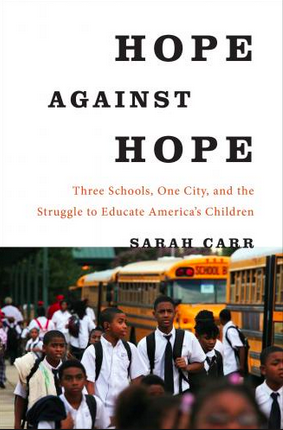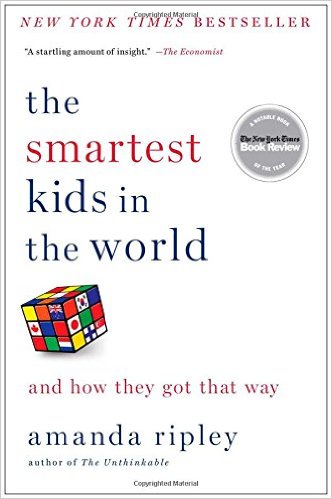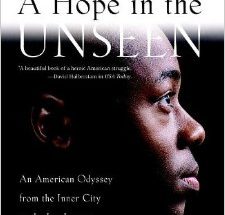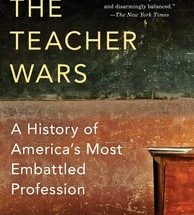 In “Hope Against Hope: Three Schools, One City, and the Struggle to Educate America’s Children,” author Sarah Carr manages to do what seems impossible: Offer a wide-lensed glimpse into the reality of the New Orleans school system, which has been overturned by Hurricane Katrina and a subsequent policy overhaul.
In “Hope Against Hope: Three Schools, One City, and the Struggle to Educate America’s Children,” author Sarah Carr manages to do what seems impossible: Offer a wide-lensed glimpse into the reality of the New Orleans school system, which has been overturned by Hurricane Katrina and a subsequent policy overhaul.
The city’s schools have largely been taken over by the Recovery School District, which was designed to take underperforming schools and turn them into charter schools. This has produced a diverse set of charter schools, run by an assortment of interests, but through the chaos Carr manages to find three people that typify the “new” New Orleans: Geraldlynn, a short-statured but dynamic 14-year-old freshmen at a new KIPP high school whose family had been displaced by Katrina; Aidan, a white Harvard grad turned Sci Academy English teacher who was brought to the city through Teach for America; and Mary Laurie, a veteran black educator and Native New Orleanian who becomes principal of Walker High School — a former public school turned charter school.
In an interview with Carr, who is currently serving as my adjunct professor in Covering Education at Columbia Journalism School, she said her goal was to offer a diverse view of the inner-workings of charter schools in New Orleans, and that she worked hard to try and find the perfect characters to exemplify the changes the city had undergone. She interviewed several students before landing on Geraldlynn, who Carr said she had an immediate connection with during their interview. Laurie epitomized the type of veteran black educator she had been looking for as a holdover from New Orlean’s previous school system, and was an easy choice. Aidan was harder to find, and didn’t come until later in the school year after another teacher didn’t work out the way she had hoped. Given the widely varying characters, she cautioned that an “apples to apples comparison” between the schools featured in the book was not the goal, and that is “important to keep in mind that the book approaches schools from very different perspectives.”
Each school is viewed from the perspective of the person featured. KIPP is only viewed through Geraldlynn’s eyes — though her mother often plays a roll — who Carr largely spoke to at home. The story of Sci Academy is told through Aidan, who Carr mostly observed while he taught and occasionally spoke to in between his busy teaching schedule. And Walker’s new start as a charter school is told from the perspective of Laurie, who Carr was able to observe on the job and interview extensively after school hours. This intensive interview process required a lot of all three schools, which Carr said was made possible by previously-established relationship she’d forged at the local paper as an education reporter. She said the level of depth in the book is “a testament to how open the schools were” in allowing her access to report freely.
While the differing interview styles and perspectives from school to school bar a clear comparison between them, they offer a deep look into the mindsets of three very different people all impacted by the same school reform movement. Aidan, Laurie and Geradlynn all face similar challenges: Adjusting to a new school in a city shaken by Katrina, a struggle to meet the high standards set out by the Reform School District and a personal desire to push themselves to be better.



